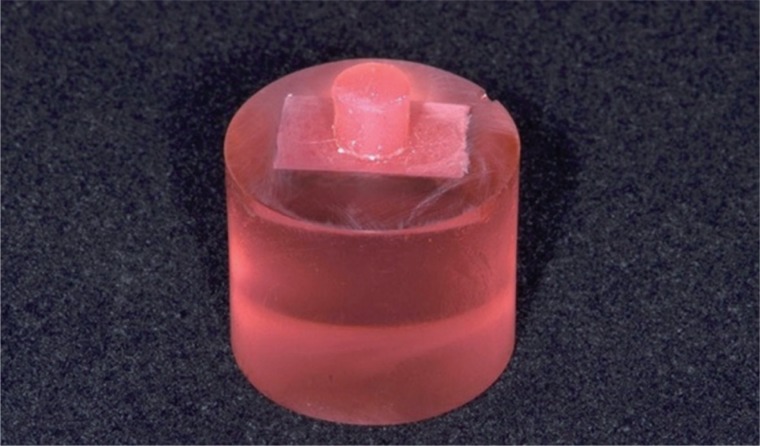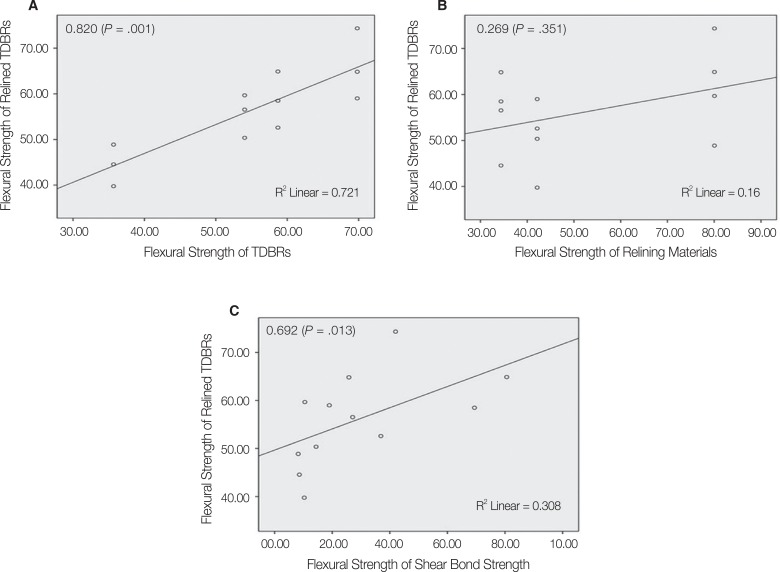1. Takabayashi Y. Characteristics of denture thermoplastic resins for non-metal clasp dentures. Dent Mater J. 2010; 29:353–361. PMID:
20644329.

2. Goiato MC, Santos DM, Haddad MF, Pesqueira AA. Effect of accelerated aging on the microhardness and color stability of flexible resins for dentures. Braz Oral Res. 2010; 24:114–119. PMID:
20339724.

3. Yunus N, Rashid AA, Azmi LL, Abu-Hassan MI. Some flexural properties of a nylon denture base polymer. J Oral Rehabil. 2005; 32:65–71. PMID:
15634304.

4. Katsumata Y, Hojo S, Hamano N, Watanabe T, Yamaguchi H, Okada S, Teranaka T, Ino S. Bonding strength of autopolymerizing resin to nylon denture base polymer. Dent Mater J. 2009; 28:409–418. PMID:
19721277.

5. Kasumata Y, Hojo S, Ino S, Hamano N, Watanabe T, Suzuki Y, Ikeya H, Morino T, Toyoda M. Mechanical characterization of a flexible nylon denture base material. Bull Kanagawa Dent Coll. 2007; 35:177–182.
6. Takahashi Y, Hamanaka I, Shimizu H. Effect of thermal shock on mechanical properties of injection-molded thermoplastic denture base resins. Acta Odontol Scand. 2012; 70:297–302. PMID:
21793643.

7. Fueki K, Ohkubo C, Yatabe M, Arakawa I, Arita M, Ino S, Kanamori T, Kawai Y, Kawara M, Komiyama O, Suzuki T, Nagata K, Hosoki M, Masumi S, Yamauchi M, Aita H, Ono T, Kondo H, Tamaki K, Matsuka Y, Tsukasaki H, Fujisawa M, Baba K, Koyano K, Yatani H. Clinical application of removable partial dentures using thermoplastic resin-part I: definition and indication of non-metal clasp dentures. J Prosthodont Res. 2014; 58:3–10. PMID:
24461323.

8. Fueki K, Ohkubo C, Yatabe M, Arakawa I, Arita M, Ino S, Kanamori T, Kawai Y, Kawara M, Komiyama O, Suzuki T, Nagata K, Hosoki M, Masumi S, Yamauchi M, Aita H, Ono T, Kondo H, Tamaki K, Matsuka Y, Tsukasaki H, Fujisawa M, Baba K, Koyano K, Yatani H. Clinical application of removable partial dentures using thermoplastic resin. Part II: Material properties and clinical features of non-metal clasp dentures. J Prosthodont Res. 2014; 58:71–84. PMID:
24746524.

9. Takahashi H, Kawada E, Tamaki Y, Teraoka F, Hosoi T, Yoshida T. Basic properties of thermoplastic resins for denture base material referred to non-clasp denture. J Jpn Dent Mater. 2009; 28:161–167.
10. Hamanaka I, Takahashi Y, Shimizu H. Mechanical properties of injection-molded thermoplastic denture base resins. Acta Odontol Scand. 2011; 69:75–79. PMID:
20873995.

11. Arena CA, Evans DB, Hilton TJ. A comparison of bond strengths among chairside hard reline materials. J Prosthet Dent. 1993; 70:126–131. PMID:
8371174.

12. Takahashi Y, Chai J. Shear bond strength of denture reline polymers to denture base polymers. Int J Prosthodont. 2001; 14:271–275. PMID:
11484577.
13. Chai J, Takahashi Y, Kawaguchi M. The flexural strengths of denture base acrylic resins after relining with a visible-light-activated material. Int J Prosthodont. 1998; 11:121–124. PMID:
9709600.
14. Arima T, Murata H, Hamada T. Analysis of composition and structure of hard autopolymerizing reline resins. J Oral Rehabil. 1996; 23:346–352. PMID:
8736448.

15. Hamanaka I, Shimizu H, Takahashi Y. Shear bond strength of an autopolymerizing repair resin to injection-molded thermoplastic denture base resins. Acta Odontol Scand. 2013; 71:1250–1254. PMID:
23339746.

16. Hamanaka I, Shimizu H, Takahashi Y. Bond strength of a chairside autopolymerizing reline resin to injection-molded thermoplastic denture base resins. J Prosthodont Res. 2017; 61:67–72. PMID:
27238884.

17. da Cruz Perez LE, Machado AL, Canevarolo SV, Vergani CE, Giampaolo ET, Pavarina AC. Effect of reline material and denture base surface treatment on the impact strength of a denture base acrylic resin. Gerodontology. 2010; 27:62–69. PMID:
19371387.

18. Takahashi Y, Kawaguchi M, Chai J. Flexural strength at the proportional limit of a denture base material relined with four different denture reline materials. Int J Prosthodont. 1997; 10:508–512. PMID:
9495170.
19. Archadian N, Kawano F, Ohguri T, Ichikawa T, Matsumoto N. Flexural strength of rebased denture polymers. J Oral Rehabil. 2000; 27:690–696. PMID:
10931264.

20. Seo RS, Murata H, Hong G, Vergani CE, Hamada T. Influence of thermal and mechanical stresses on the strength of intact and relined denture bases. J Prosthet Dent. 2006; 96:59–67. PMID:
16872932.

21. Reis JM, Vergani CE, Pavarina AC, Giampaolo ET, Machado AL. Effect of relining, water storage and cyclic loading on the flexural strength of a denture base acrylic resin. J Dent. 2006; 34:420–426. PMID:
16580115.








 PDF
PDF ePub
ePub Citation
Citation Print
Print






 XML Download
XML Download